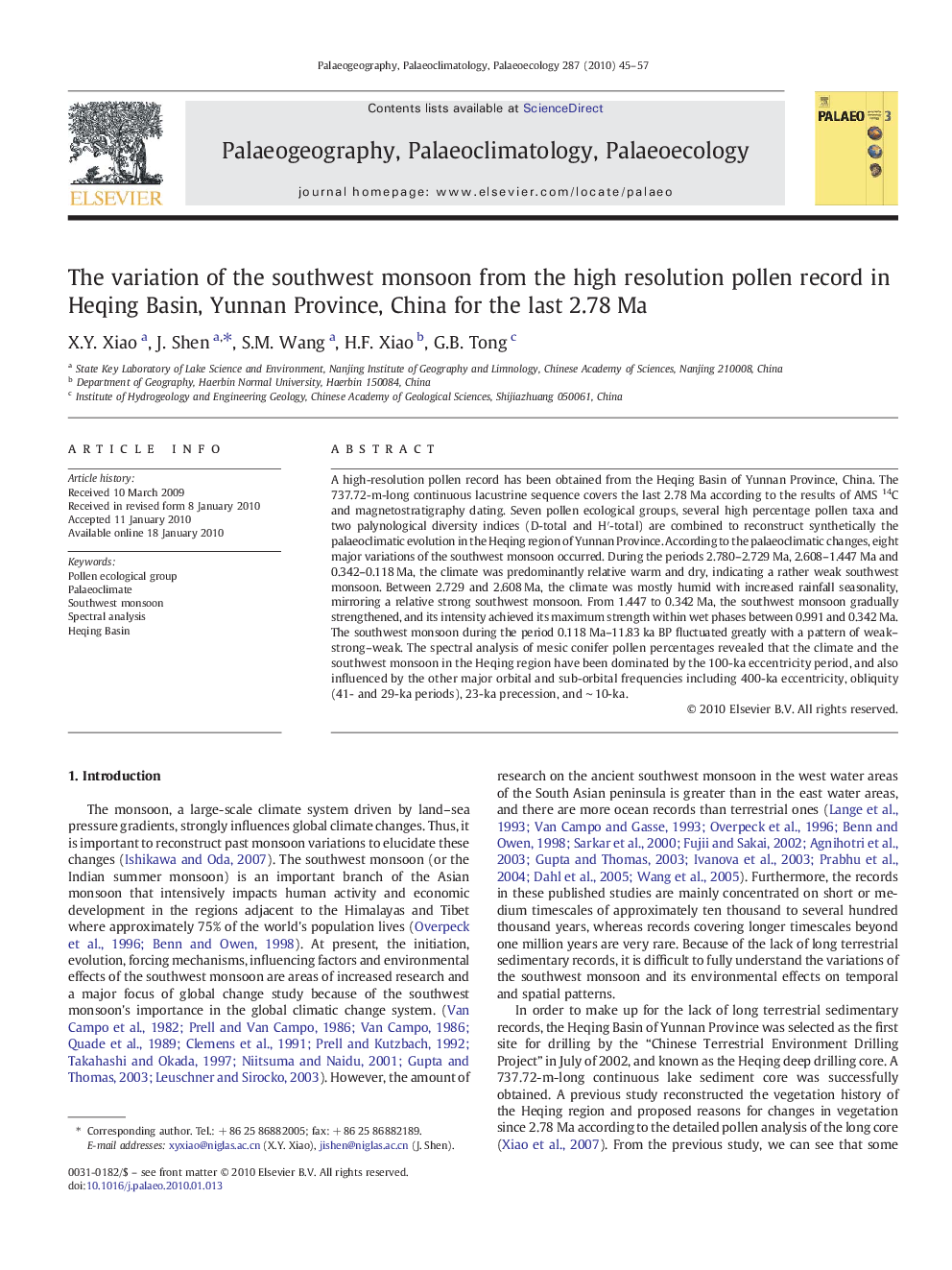| Article ID | Journal | Published Year | Pages | File Type |
|---|---|---|---|---|
| 4467833 | Palaeogeography, Palaeoclimatology, Palaeoecology | 2010 | 13 Pages |
A high-resolution pollen record has been obtained from the Heqing Basin of Yunnan Province, China. The 737.72-m-long continuous lacustrine sequence covers the last 2.78 Ma according to the results of AMS 14C and magnetostratigraphy dating. Seven pollen ecological groups, several high percentage pollen taxa and two palynological diversity indices (D-total and H′-total) are combined to reconstruct synthetically the palaeoclimatic evolution in the Heqing region of Yunnan Province. According to the palaeoclimatic changes, eight major variations of the southwest monsoon occurred. During the periods 2.780–2.729 Ma, 2.608–1.447 Ma and 0.342–0.118 Ma, the climate was predominantly relative warm and dry, indicating a rather weak southwest monsoon. Between 2.729 and 2.608 Ma, the climate was mostly humid with increased rainfall seasonality, mirroring a relative strong southwest monsoon. From 1.447 to 0.342 Ma, the southwest monsoon gradually strengthened, and its intensity achieved its maximum strength within wet phases between 0.991 and 0.342 Ma. The southwest monsoon during the period 0.118 Ma–11.83 ka BP fluctuated greatly with a pattern of weak–strong–weak. The spectral analysis of mesic conifer pollen percentages revealed that the climate and the southwest monsoon in the Heqing region have been dominated by the 100-ka eccentricity period, and also influenced by the other major orbital and sub-orbital frequencies including 400-ka eccentricity, obliquity (41- and 29-ka periods), 23-ka precession, and ∼ 10-ka.
